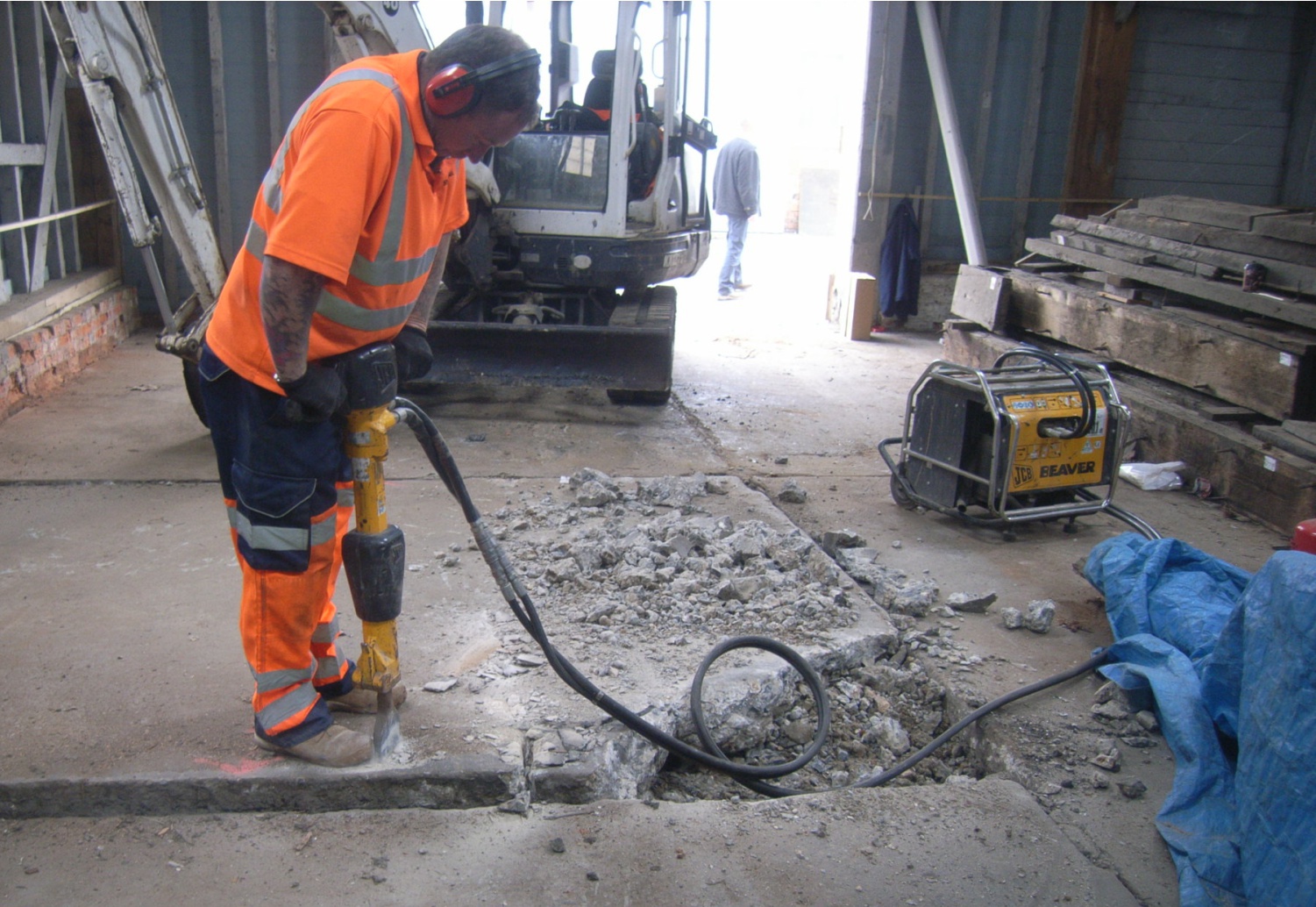
As part of our ongoing work with the Chatham Historic Dockyard Trust we were once again invited back to the dockyard and this time the weather favoured us! Our target of investigation on this occasion was a pickling pond which is believed to exist beneath the Wheelwrights House. Does it still remain in situ and if so how is it built and what condition is it in?
Firstly a little background. Initially build in the 18th century this pond would have formed an extension to the original Southern Mast Pond the extent of which was around 20 m east of the later one we found on our last visit. So what was it used for? Well in order to produce ships you need wood, and lots of it! This may have been sourced locally but with such vast quantities required the adjacent river would have provided an ideal route for delivering the necessary raw materials. In order to prepare the logs for use they would have first needed to be seasoned and this is where the pickling pond would have come in. Filled with brackish water the timbers would have been immersed and stored during which time sap would have been leached out and replaced by salt from the pond water which would have been provided via a series of culverts and tunnels connected to the adjacent river. Once adequately treated and dried, a process that would take many months, timbers would have been transported to the sawyers for use or stored for later use in the adjacent storehouses. The pickling pond therefore formed an essential role in the mechanism of the dockyard and the production of ships such as HMS Victory (1765), HMS Namur (1756) and HMS Unicorn (1824).
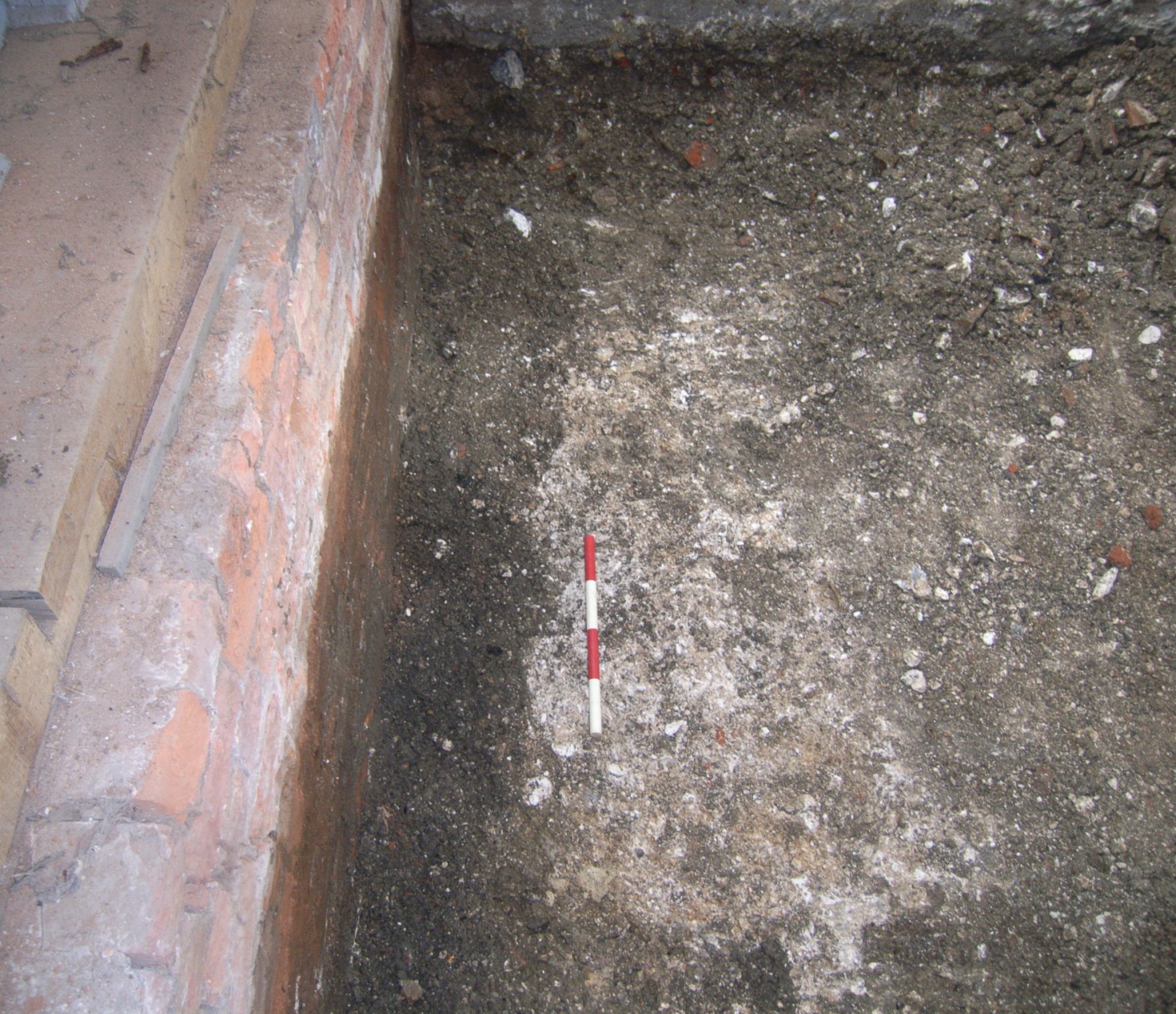
Today the pickling pond lies below the Wheelwrights Shop which was constructed in about 1780 and currently house timbers of the broken up 17th century Warship HMS Namur.
So, what were we expecting to find? Well, excavations carried out on the site over the last few years have suggested that the base would be formed of a timber grid, lined with puddle clay approximately 3 m below the existing ground levels. As to whether this construction pattern remained consistent was at the time unknown. This is why we were there. Future plans for the site need to take into consideration any underlying archaeological material and in order to do that architects, engineers and inspectors from English Heritage all need to know what remains. That way safeguarding measures can be put into place before, during and after development to ensure the survival of buried archaeological deposits.
So back to the excavation! With the assistance of the Chatham Historic Dockyard Trust our Fieldwork Director David Britchfield opened Test Pit 6 on a bright and sunny day (although we were under cover within the existing Wheelwrights Shop so still a wee bit chilly!) in March. After marking out an area that measured about 3.5 m square the initial work began with the removal of the existing concrete slab – a somewhat noisy process! This needed to be done in haste as we immediately noticed the difference from our last visit – the site is now open! Numerous buses, school coaches and cars were starting to arrive and the coffee shop was about to open. The last thing they wanted was noisy workman in the next building. Thankfully the construction team from Spadeoak, pictured above, did a great job - the slab was out within the hour and morning tea could be taken in peace!
Using a small machine (we were rather restricted for room and height) we started to peel away at the upper layers which consisted of modern redeposited chalk and clay, carefully keeping an eye out for artefacts and changes in the soil sequence. Once we were down about a metre or so below the existing slab level the foundations for the Wheelwrights Shop became clearly visible cut into redeposited chalk that formed the upper fill of the pickling pond, as can be seen in the photograph below. ‘Stop please Mr machine driver, we need to record this’!
Following recording we carried on removing the upper layers of fill and it wasn’t long before the test pit began to get deep and things were getting, well, for want of a better word…..smelly. You see the pond has only been filled for a few hundred years. Organic material in such a wet environment takes time to break down and as it does it produces a rather pungent odour.
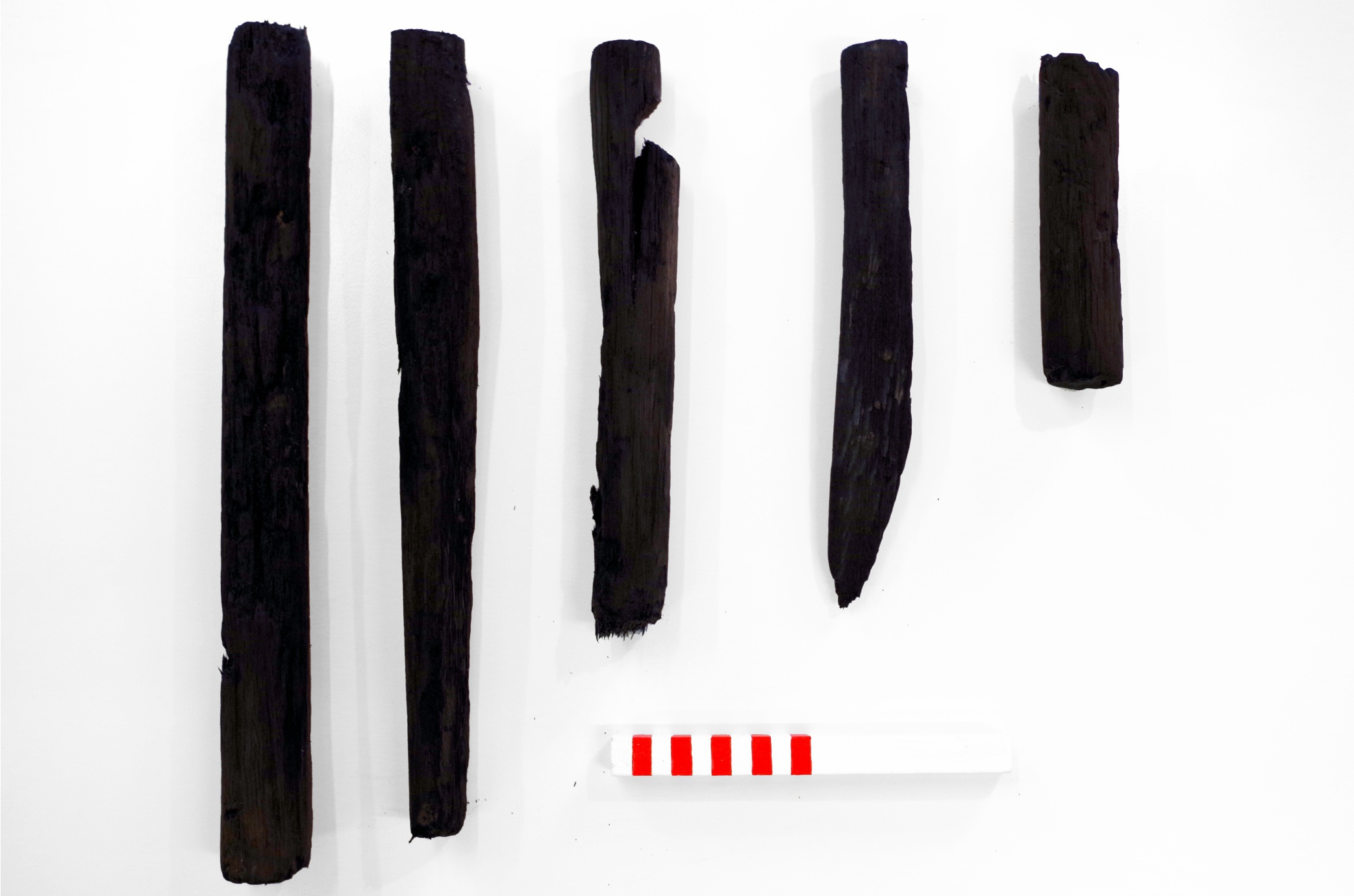
It was at this level that we also started to notice a difference in the colour and consistency of the soil – we were no longer in deliberate backfill, but in naturally formed silts and clays. In other words, the silted up base of the former working pond. To add to our discovery we had wood….and lots of it! Wood chips were frequent, as one would expect in a timber yard, but added to this we had sections of roundwood that had been deliberately cut and trimmed into large dowel-shaped pieces. We had found treenails! In excellent condition these treenails, a few of which are shown in the photograph above, would have been essential for the construction of ships and of course timber framed buildings and would have been used to fasten pieces of wood together. A great find considering part of the existing building was occupied by the Treenail Makers Workshop!
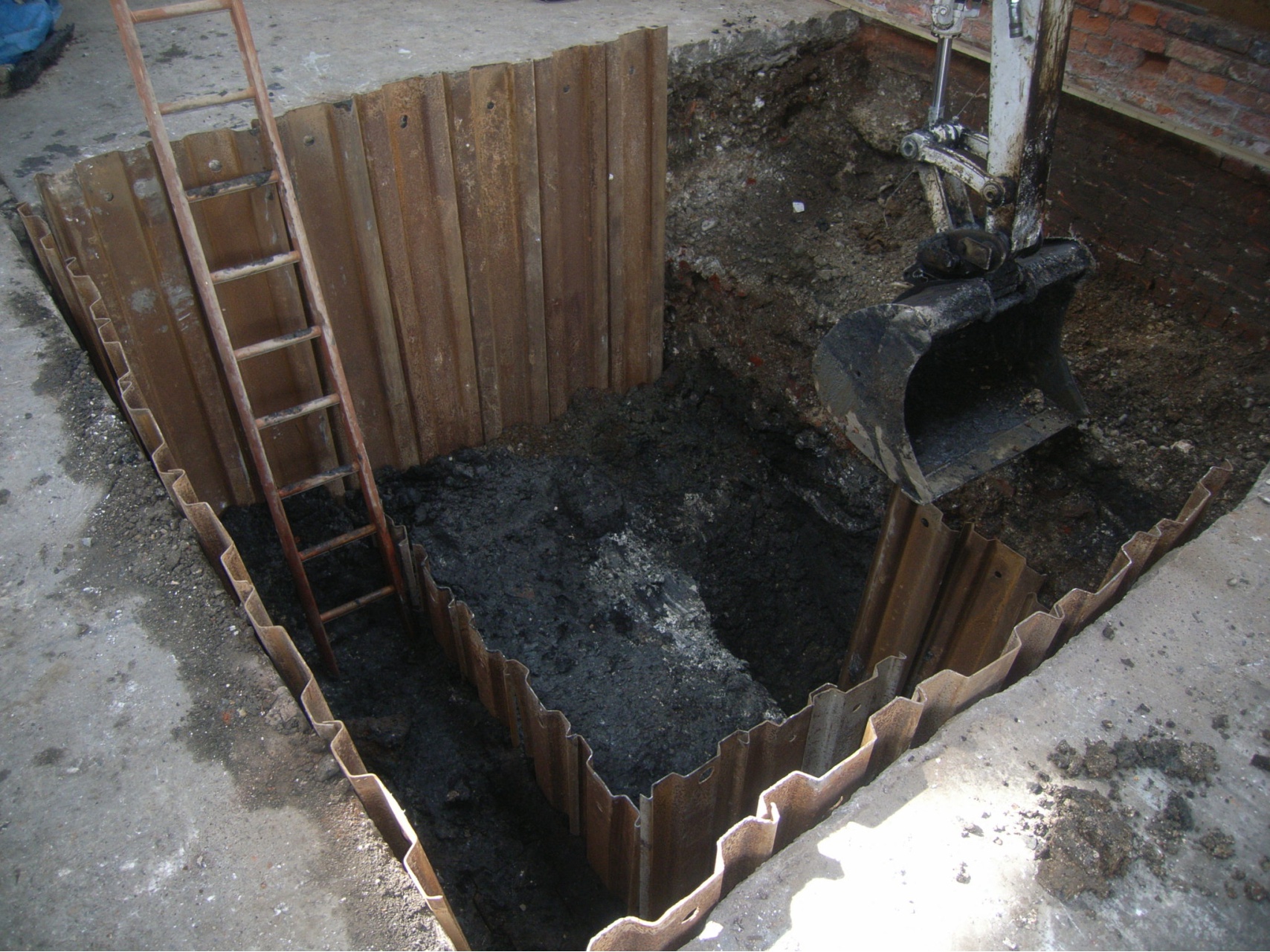
Now as we were so deep we needed to use a combination of steel sheet piles, props, steps and battered edges in order to get to the levels required, as can be seen below. Unfortunately this meant that space was rather limited at the base and our Fieldwork Director is not a slight man!
Be that as it may we struck gold….well brown really as at the very bottom of our test pit we located a large horizontal timber. Initial examination of the timber confirmed that it was in excellent condition, as can be seen from the two photographs below. The anaerobic environment of the lower sequence of deposits provides ideal conditions for preservation attested to by the frequency of wood chips and treenails within the higher deposits. The timber was sawn, appeared to be made from oak and measured 0.45 m in width with a depth of 0.10 m. Despite a thorough examination there was no indication any joint details or of vertical timber piles below this timber.
Of particular interest is that the timber was found alone. Chatting with Nigel Howard, the Historic Environment & Buildings Project Manager for The Historic Dockyard Chatham, he told us that previous geotechnical excavations to the south of the site suggested that the base of the pickling pond would have been formed using a grid of timbers with two (or more?) layers laid tangentially on top of each other at regular centres. This was confirmed during the earlier geotechnical works where the thickness of timber was recorded as being at least 0.90 m suggesting that the borehole drilled through more than one timber. The timber exposed in Test Pit 6 was also thinner much than originally expected. Its presence directly on top of a chalk bed may suggest that the base of the pickling pond was originally formed using shallower timbers, possibly in order to create a level formation?
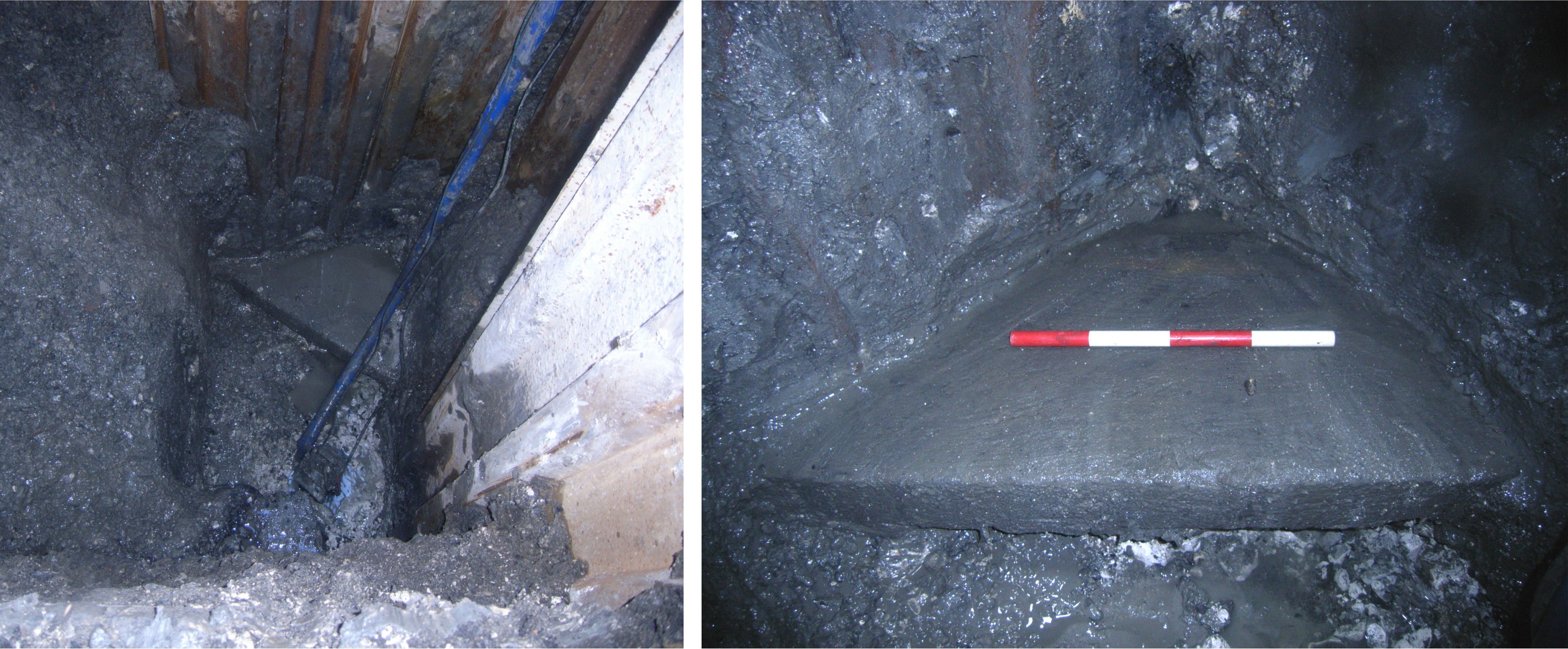
So it had all been worth it! Not only did we located the base of the pickling pond we confirmed that the preservation conditions were excellent. Of course as with most forms of archaeological and historical enquiry as soon as you answer one question another three pop up! Where was the timber grid recorded to the south? Was the horizontal base supported on vertical piles? How does the construction of this pond compare with the larger Northern Pond and Southern Pond? Well the simple answer to that is that we may never know as we may not have another opportunity to investigate these levels. That said we now have a better idea as to how the pond was constructed. We are more informed of the preservation conditions and we know what levels the archaeological horizons start and finish. Armed with that information the engineers and architects have produced designs for the new development that enhance the present while protecting the past.
Coming soon - Works at The Historic Dockyard Chatham throughout the summer of 2014 including the excavation of part of the Southern Mast Pond and Brunel Canal.
Associated links: